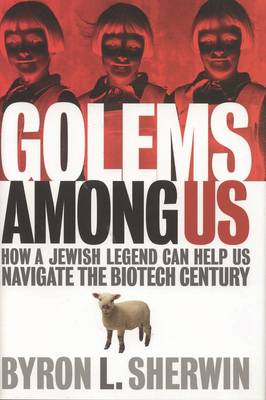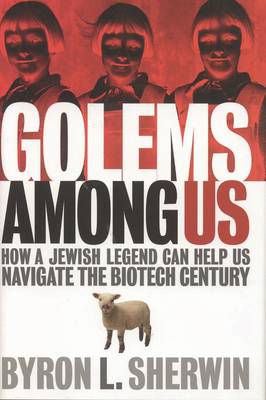
Je cadeautjes zeker op tijd in huis hebben voor de feestdagen? Kom langs in onze winkels en vind het perfecte geschenk!
- Afhalen na 1 uur in een winkel met voorraad
- Gratis thuislevering in België vanaf € 30
- Ruim aanbod met 7 miljoen producten
Je cadeautjes zeker op tijd in huis hebben voor de feestdagen? Kom langs in onze winkels en vind het perfecte geschenk!
- Afhalen na 1 uur in een winkel met voorraad
- Gratis thuislevering in België vanaf € 30
- Ruim aanbod met 7 miljoen producten
Zoeken
Golems Among Us
How a Jewish Legend Can Help Us Navigate the Biotech Century
Byron L Sherwin
Hardcover | Engels
€ 39,95
+ 79 punten
Omschrijving
Mr. Sherwin briefly traces the fascinating history of the golem legend in Western culture, then shows what lessons it holds for us in navigating a safe journey-philosophically, theologically, ethically, and in public policy-through the minefield of twenty-first-century social and biological engineering in which we now stand. "A fascinating journey....Sherwin's compassion, humor, and intellect provide a moral compass to help us navigate through astonishing, promising, and sometimes perilous developments in biotechnology."-Lori Andrews.
Specificaties
Betrokkenen
- Auteur(s):
- Uitgeverij:
Inhoud
- Aantal bladzijden:
- 258
- Taal:
- Engels
Eigenschappen
- Productcode (EAN):
- 9781566635684
- Verschijningsdatum:
- 17/05/2004
- Uitvoering:
- Hardcover
- Formaat:
- Genaaid
- Afmetingen:
- 161 mm x 234 mm
- Gewicht:
- 462 g

Alleen bij Standaard Boekhandel
+ 79 punten op je klantenkaart van Standaard Boekhandel
Beoordelingen
We publiceren alleen reviews die voldoen aan de voorwaarden voor reviews. Bekijk onze voorwaarden voor reviews.









